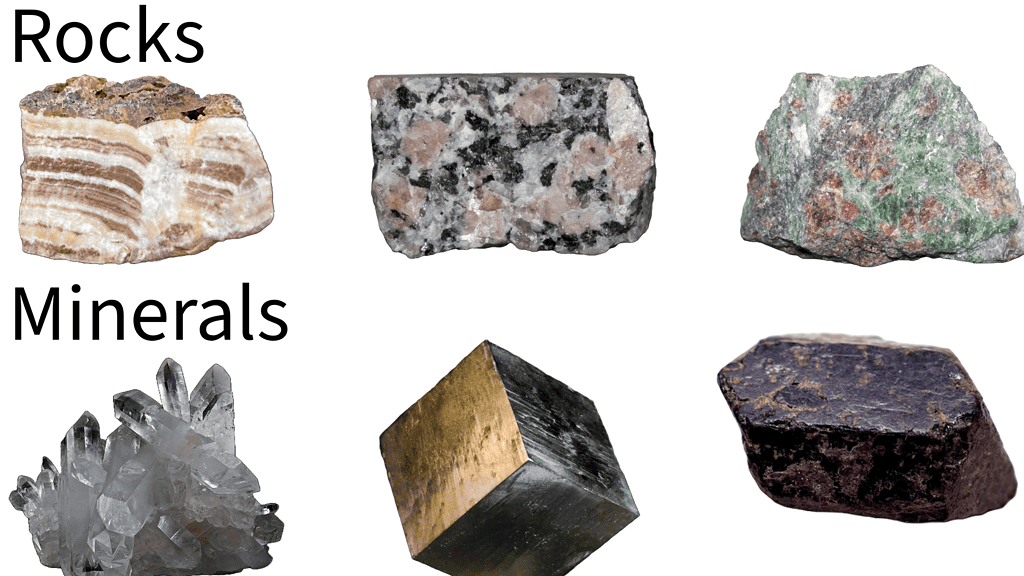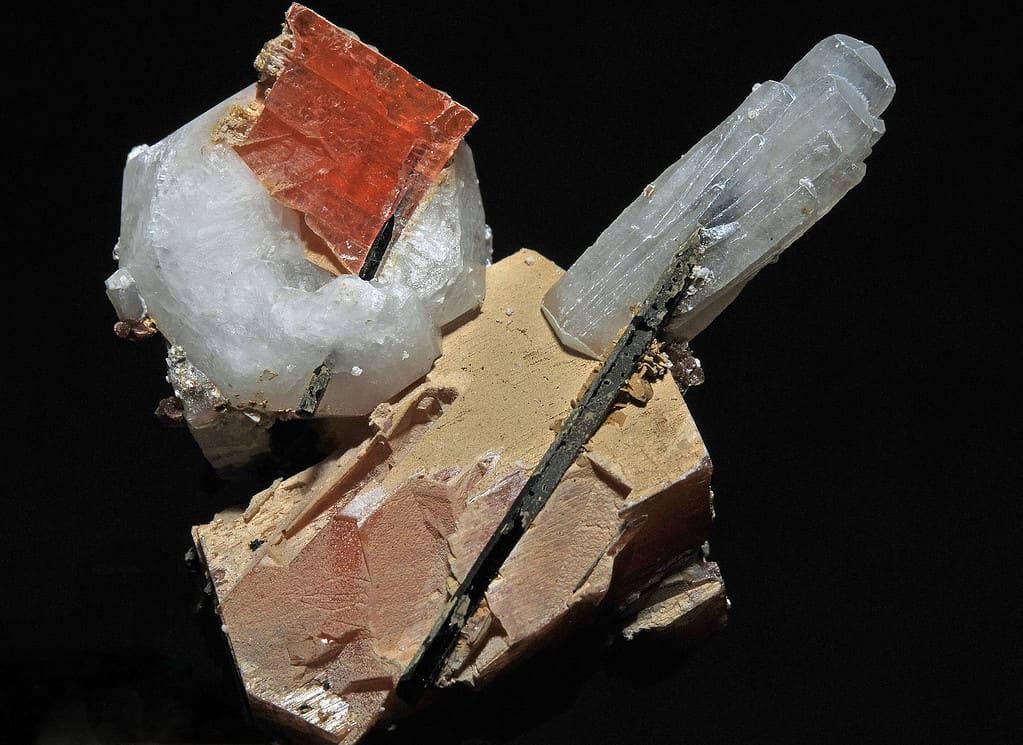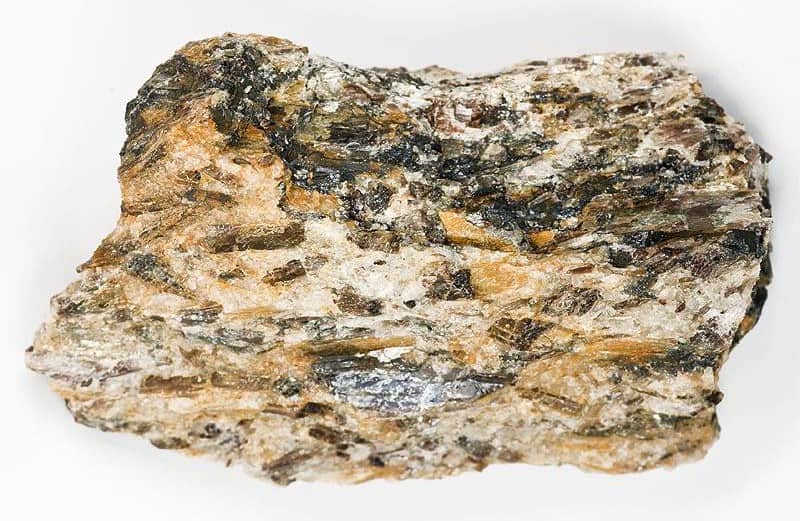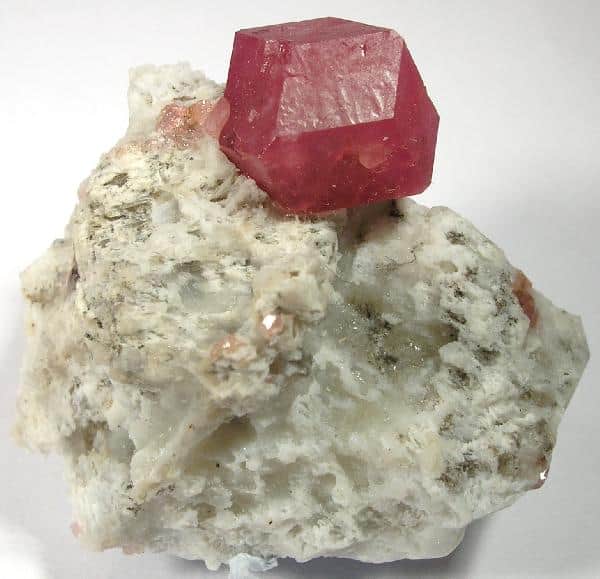Minerals are naturally occurring substances with a distinct chemical composition and crystalline structure, like quartz or feldspar, each with its unique properties. Rocks, however, are aggregates of one or more minerals; they do not have a consistent chemical composition.
But that’s just the short version. The long version is more interesting.

Defining rocks and minerals
Let’s start with the basics.
Minerals are naturally occurring substances with a definite chemical composition and a crystalline structure. Think of them as geology’s building blocks. They’re like the ingredients in a recipe — pure and specific. Examples include quartz and feldspar, two of the most common minerals found in the Earth’s crust.
Rocks, on the other hand, are more like the final dish made from multiple ingredients. They are aggregates, or combinations, of one or more minerals. Think of granite, a common rock that is a mix of quartz, feldspar, and mica. Each rock tells a story of its own, a mix of minerals and conditions that led to its formation.
Here are some examples of rocks and minerals.
Minerals:
- Quartz: A hard, crystalline mineral composed of silicon and oxygen atoms, commonly found in many types of rocks.
- Feldspar: The most abundant group of minerals in the Earth’s crust, used in ceramics and glassmaking.
- Calcite: A carbonate mineral, the principal constituent of limestone and marble, known for its variable hardness and its reaction to acids.
- Mica: A group of sheet silicate minerals known for their perfect cleavage, allowing them to be split into thin sheets.
- Pyrite: Also known as “fool’s gold,” pyrite is a sulfide mineral with a metallic luster and pale brass-yellow hue.

Rocks:
- Granite: An igneous rock, composed mainly of quartz, feldspar, and mica, known for its grainy appearance and used in construction.
- Basalt: A dark-colored, fine-grained igneous rock formed from lava, rich in iron and magnesium.
- Limestone: A sedimentary rock primarily made of calcite, often formed from marine organisms’ shells and skeletons.
- Sandstone: A clastic sedimentary rock composed mainly of sand-sized mineral particles or rock fragments.
- Marble: A metamorphic rock formed from the recrystallization of limestone, known for its use in sculpture and as a building material.

More differences between rocks and minerals
Physical Properties
Minerals have specific characteristics like hardness, color, luster, and crystal form. Take diamonds, for instance, renowned for their unparalleled hardness and sparkling brilliance. Or consider mica, with its unique flaky structure and shiny surface.
Rocks, being mixtures of minerals, display a more varied range of physical properties, influenced by their constituent minerals. For example, sandstone, primarily composed of sand-sized particles, can range in color from beige to red, depending on the minerals it contains. Granite, known for its speckled appearance and hardness, owes these qualities to the interlocking crystals of quartz, feldspar, and mica.

Uses and Applications
The practical uses of rocks and minerals extend far beyond geology. These properties influence how we use rocks and minerals.
Minerals are critical in various industries due to their unique properties. For instance, quartz is used in making glass, watches, and electronics because of its hardness and piezoelectric properties. Talc, which is soft and absorbent, finds its place in cosmetics and baby powder.
Rocks have their own set of applications. Limestone, a sedimentary rock, is a key ingredient in cement and is also used to neutralize acidic soils in agriculture. Granite, with its durability and aesthetic appeal, is a popular choice for countertops and architectural elements. Similarly, slate’s resistance to weather and attractive finish make the rock a go-to roofing material.
The bottom line
Rocks and minerals are fundamentally different in composition, formation, properties, and applications. Minerals are the pure, unchanging building blocks, each with a unique chemical composition and crystal structure. Rocks are the diverse, often complex assemblies of these minerals, telling stories of the Earth’s dynamic geological processes.
The study of these natural phenomena not only satiates our scientific curiosity but also has practical implications in various industries. For science enthusiasts, the world of rocks and minerals is a never-ending adventure, offering insights into the very foundations of our planet.






